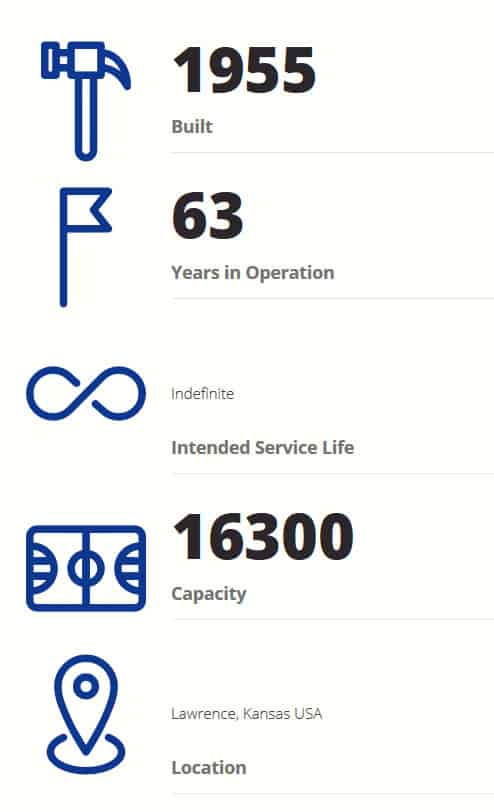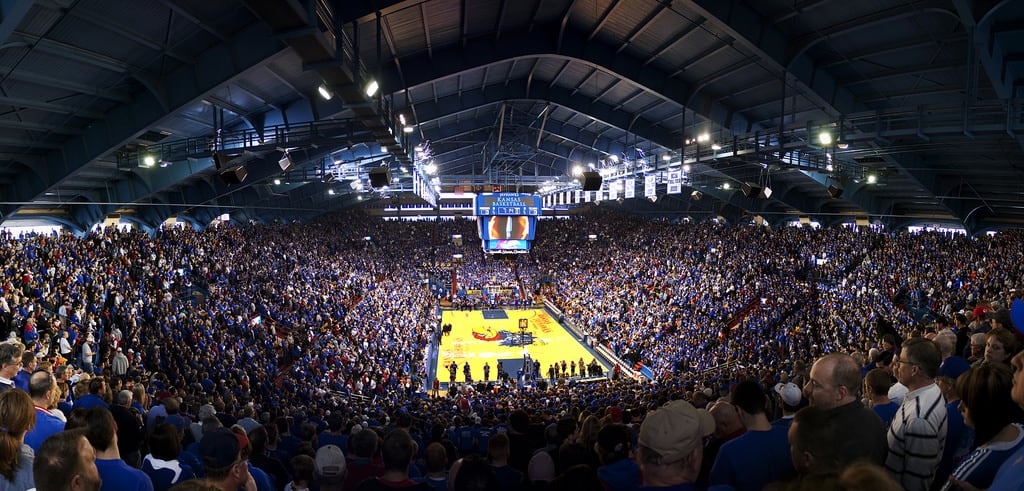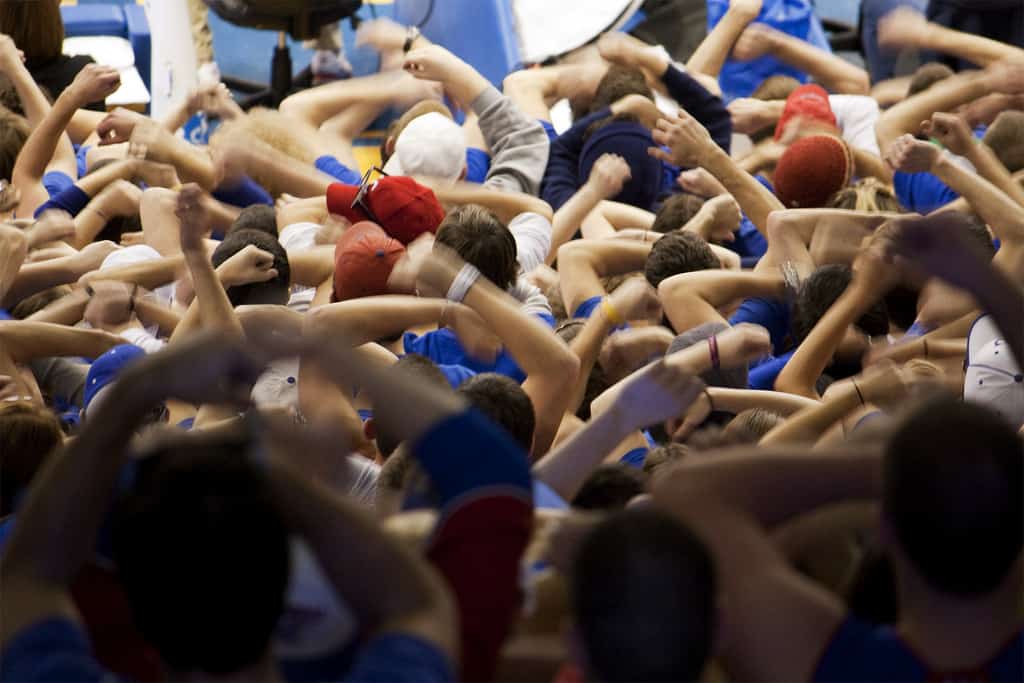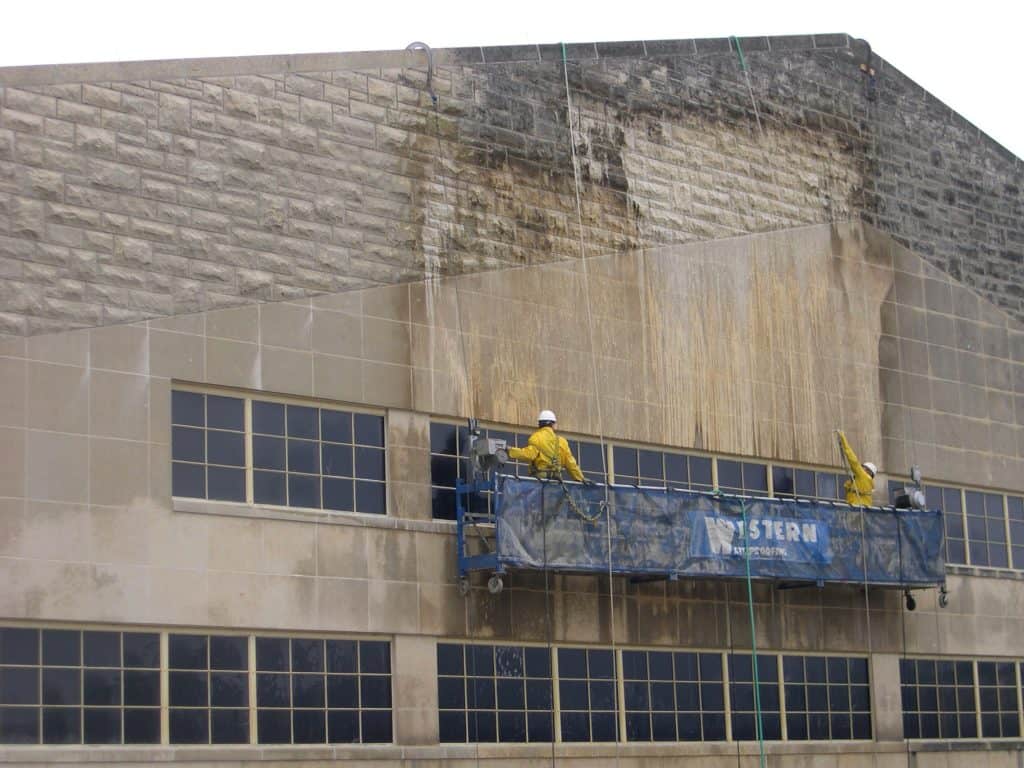 College campuses are always in a state of change. Buildings come and go and new buildings have been built at an alarming rate (at least for some universities.) When alumni return to campus years after graduation, sometimes it can feel as if the school they loved has completely changed. It’s led to a phenomenon known as the higher education facilities arms race, the battle colleges fight to stay relevant with the best new buildings.
College campuses are always in a state of change. Buildings come and go and new buildings have been built at an alarming rate (at least for some universities.) When alumni return to campus years after graduation, sometimes it can feel as if the school they loved has completely changed. It’s led to a phenomenon known as the higher education facilities arms race, the battle colleges fight to stay relevant with the best new buildings.
But some buildings hold such historical significance that they stay the same, even if the modern necessities of that type of building have changed. Allen Fieldhouse, the basketball arena on the campus of the University of Kansas in Lawrence, Kan., is one of those buildings. It has seen some changes and facelifts, but the bones of this 63-year-old arena remain largely unchanged.
A college basketball mecca
The University of Kansas has always been a college basketball powerhouse. When the University started their basketball program in 1898, there were very few serious college basketball programs nationwide. KU sought out the best from the get-go, seeking out the inventor of the game, James Naismith, to be their first head coach. Oddly enough, Naismith had the lowest winning percentage of any Kansas basketball coach.

Originally, the Jayhawks competed in the basement of a building on campus. It was rare at the time for there to be a purpose-built arena for the new sport, and often players had to avoid environmental hazards like low ceilings or support columns in the middle of the court. The first purpose-built arena for the Jayhawks wasn’t completed until 1907, 8 years after the program began.
By the time Allen Fieldhouse was built, the Kansas Jayhawks were already a college basketball powerhouse. They began construction in 1952, right after the men’s basketball team won their first NCAA tournament championship. Their success once the Fieldhouse was completed would make them a true blue-chip program, and the arena itself would become a must-visit destination for all college basketball fans.
Built during wartime
Allen Fieldhouse took three years to complete , mainly because it was built during a difficult time: World War II. Federal mandates restricted steel use for non-military purposes, and the builders eventually ran into roadblocks preventing them from continuing construction.
So how did they work around the restrictions? Well, they found a loophole, one many construction projects used at the time. They built in a couple of extra rooms, called the building an armory, and pledged the extra rooms to the federal government to store guns and ammo. Of course, the rooms were never used to store guns and ammo, but they were there in case the government needed them.
A legendary name
Every great arena needs a great name, and Allen Fieldhouse is named for one of the greatest college basketball coaches of all time.
Forrest “Phog” Allen was coach of the University of Kansas men’s basketball team for two separate periods; 1907-1909 and 1919- 1956. In total, he led the Jayhawks for almost 40 years. His longevity was earned, too. He won 73% of his games, winning 24 conference titles, one NCAA tournament title, and 2 Helms Association national championships. Allen was such a legendary coach that when the fieldhouse was dedicated in 1955, they named it after him while he was still coaching.
It’s common today for sports venues to change names or even sell sponsorship deals for naming rights. Allen Fieldhouse has never done that, continuing to proudly bear the name of the coach that forever impacted the program.
While Allen is immortalized on the outside of the building, the court itself is named after Naismith.

Home court advantage
Since the opening of Allen Fieldhouse, the Kansas men’s basketball team has had an impressive home court advantage, winning over 70 percent of their games there. A few winning streaks have lasted entire seasons (with one reaching more than 50 games), and many seasons the team didn’t lose more than a single home game.
Many visitors cite the history and mystique of Allen Fieldhouse as a major reason for the Jayhawks’ dominance in the building. It simply feels old with wooden bleachers and exposed steel in the ceiling. It lacks the polish of modern-built arenas, but it more than makes up for it in charm. You inexplicably feel the weight of the building as you enter it, and the crowd of 16,300 is so close to the court that it must feel claustrophobic for players visiting for the first time.”
It also helps that the regular sell-out crowds are also very loud. Allen Fieldhouse is one of the loudest college basketball venues in the country, occasionally holding Guinness World Records for loudest crowd roars.
Preserving an icon
Just because Allen Fieldhouse has endured as one of the greatest venues in college basketball for 60 years doesn’t mean it hasn’t gone through changes. In fact, Allen Fieldhouse has seen several major renovations, all of which have taken great care to add modern amenities and features while preserving the classic feel of the arena.
The first major renovation came in 1999 when school officials upgraded the concourse around the arena with elevators, new concession stands and upgraded bathrooms. The scoreboards were updated to keep up with modern technology.
In 2005, the exterior limestone underwent a masonry cleaning which took the blackened, “aged” look of the building and turned back the clock. The project team removed biological staining from the limestone with a combination of ReKlaim Cleaner, 766 Limestone & Masonry Prewash and Limestone & Masonry Afterwash. They then protected the facade with an application of Weather Seal H40, a masonry-strengthening water repellent. Since its first cleaning, its gleaming white stone has been maintained and today it still shines brightly against the Kansas sky.

Then, in 2009, two major rounds of renovations began. The University started with the addition of the Booth Family Hall of Athletics – an extended atrium added to the eastern side of the building filled with exhibits and memorabilia from Kansas’ extended college basketball history. Along with the Booth Family Hall, additional fan services were added as well as new practice facilities and locker rooms for the team.
Then in 2010, construction began on another addition: The DeBruce Center. The Booth Family, the donors for which the Hall of Athletics was named, financed the purchase of James Naismith’s original rules of basketball with the intention of displaying them in or near the fieldhouse. The DeBruce Center was built to give additional space for basketball memorabilia like the rules as well as give fans an additional space and services. Now, the DeBruce Center is one of the most popular buildings on campus for visitors.
A special place
For many, Allen Fieldhouse was the location for many of their greatest memories. Not only for the players who graced the court and basketball fans who cheered from the stands. It’s a valuable building for the KU students and the rest of the Lawrence, Kansas community.
Even when a building has a specific purpose, its impact can go far beyond its intent. Allen Fieldhouse is more than just an arena where they host sporting events for a few months out of the year. It’s a special place worth preserving and protecting, even during the off-season.
![]()